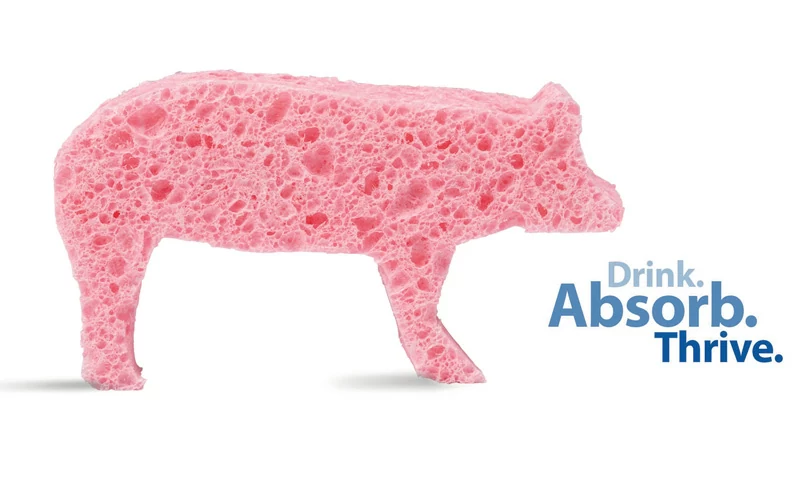Hydration and Weaned Pigs
Weaning is a very stressful event that inflicts pigs with significant changes in behavior, physiology, and health status. Researchers have shown however, that a series of stress events beyond weaning alone can have adverse compounding affects. This idea is called the Additive Stressor Model (Figure 1) that shows how individual stress events may have moderate effects on the pig, but when combined may have lethal implications.
Some of the events that combine for adverse outcomes include:
- Separation from mom
- Comingling (aggression)
- Transport
- Environment change
- Transient starvation
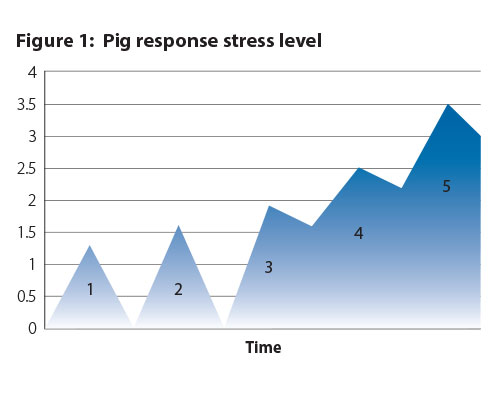
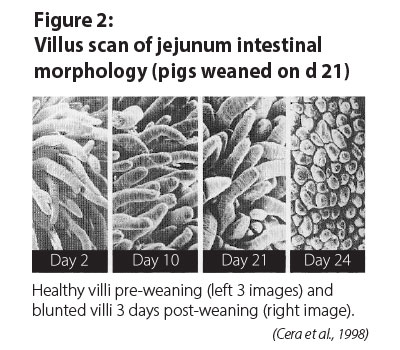
These events can result in digestive upsets, scouring, more fall-behinds, and even mortality for the weak. Nutritional support is required to help pigs overcome the health challenges but getting pigs to eat is an issue – especially when they are either not yet on dry feed or their intake drops so low that minimum nutrient requirements are not being met. Data has shown that no two pigs eat with the same pattern2. In fact, just the opposite is true. A pendulum of consumption that swings between gorging and starving compromises villi in the gut. It takes days, and even weeks, to restore back to health depending on the level of trauma. Sometimes there is no recovery from the stress event and villous atrophy3 (Figure 2) can occur when nutrients are insufficient.
Day one of weaning shows a marked improvement in water intake before a slight dip. Regardless, in the early weeks following weaning, water intake far exceeds dry feed intake4 (Figure 3).
TechMix product developers created stock solutions termed Nutrient Dense Liquids that are loaded with the very specific nutrients a pig needs. Nutrient dense liquids are between 60% and 65% solids and contain 3 times greater nutrient density than traditional stock solutions – yet can be conveniently delivered through the medicator.
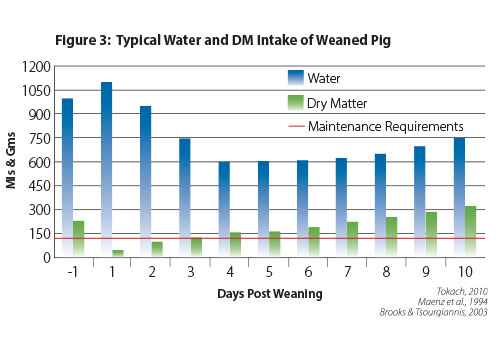
By hyper-boosting the water with nutrients during the period when dry feed intake is low, inconsistent, or nonexistent, nutrient dense liquids can provide a more stable level of nutrients to the intestinal villi. As a result, the chance of fall behinds goes down, while the chance of improved health, improved immune status, and reduced morbidity and mortality may occur.
Gut function, water, and hydration status
Literally all nutrients get absorbed into the body through the epithelium (Figure 4) – a single layer of cells covering the intestinal villi. Motility of the gut (subtle contractions) along with digestive enzymes break nutrients down into molecules that are absorbed once in contact with absorptive epithelial cells.
When an animal experiences a stress event and feed or water intake drops, the body’s nervous system sends signals to the digestive system altering motility and the secretion of hormones in the epithelial region in response to the lack of foodstuffs. These responses affect the structure and funtion of the epithelial lining and elevate the ptential for toxins to enter the body through widening gaps between epithelial cells – a condition commonly known as leaky gut. Certain toxins lock open channels between epithelial cells resulting in the excess secretion of water to the gut – or diarrhea.
Under normal health conditions, some nutrient molecules also enter the body through the gaps between epithelial cells while others are absorbed directly through the cells via specific nutrient transporters that allow for the passing of these specific nutrient transporters that allow for the passing of these specific nutrients. Although water can be absorbed in both ways, the most efficient way is through transporters within the cell. Water is meant to flow back and forth freely from cells into the lumen and back as a digestive and nutrient transport aid. Therefore, abundant water is required to optimize these functions and is considered the cornerstone of an animal’s hydration health status.
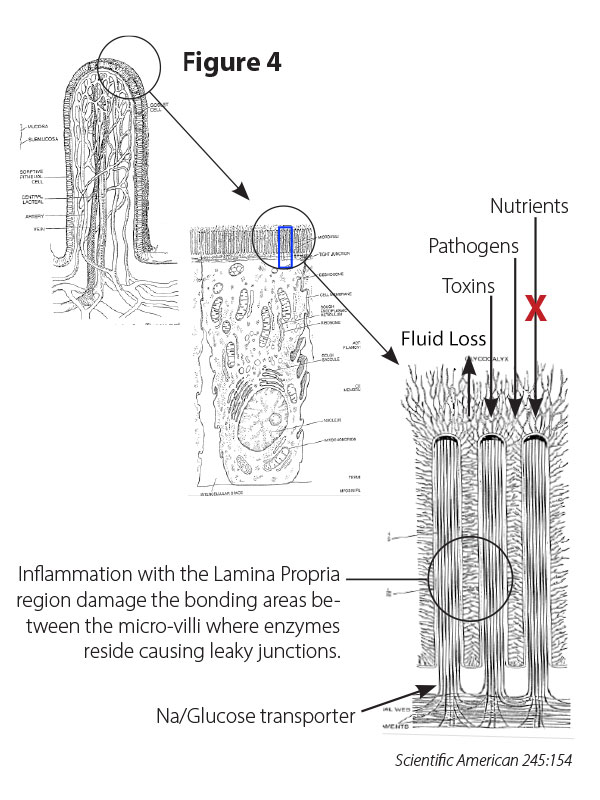
what is osmolarity and why does it matter?
One of the principle objectives in development of our nutrient dense liquids was maximizing the amount of water transferred from the lumen into the body as a means of optimizing the hydration health of the pig. Sodium is primarily co-transported with glucose and amino acids through sodium glucose transporters that reside within epithelial cells, and through sodium-dependent amino acid transporters. Water absorption is dependent on sodium absorption and will follow sodium particles through these transporting pumps into the cells. The more sodium particles there are, the more water can transfer. Osmolarity is therefore, based on the number of particles in a solution and not particle size (Figure 5).
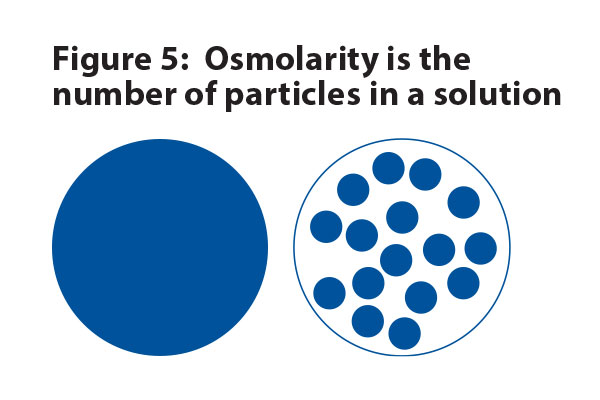
As a result, when formulating for nutrient concentration and optimized water absorption, maximizing the number of particles results in high osmolarity, and highly absorptive product.
When water and nutrients are transported from the lumen through epithelial cells, electronic charges are generated that occur naturally in a functioning gut. Research experiments mimicking these electronic charges are used to validate the relationship from osmolarity to absorption. Specifically, the strength of Isc (short-circuit) electrical current is measured and the higher the electrical current the more water and nutrients are being transported. Figure 6 shows a direct relationship of higher electrical currents with increased osmolarity.
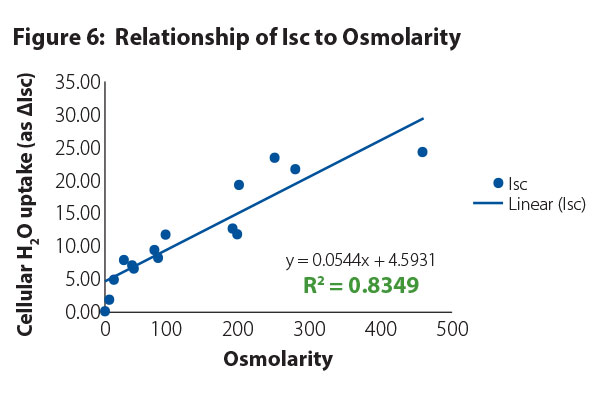
blue2 and who (world health organization)
Without absorption by the intestinal villi, even highly nutrient-dense products may not have the desired effectiveness – meaning that nutrients may be available but they aren’t delivered in a way that facililtates absorption.
Our framework for product osmolarity is patterned after the World Health Organization’s (WHO) guidelines for human electrolyte products for infants. Simply put, formulating our weaned pig products for optimized osmolarity means that it is easier for nutrients and water to be absorbed into the body’s system. Additionally, baby pig products formulated as a liquid is more than just for ease of use, but also provides a more effective delivery method over powdered electrolyte products when developing for optimal absorptive ability. (Figure 7).
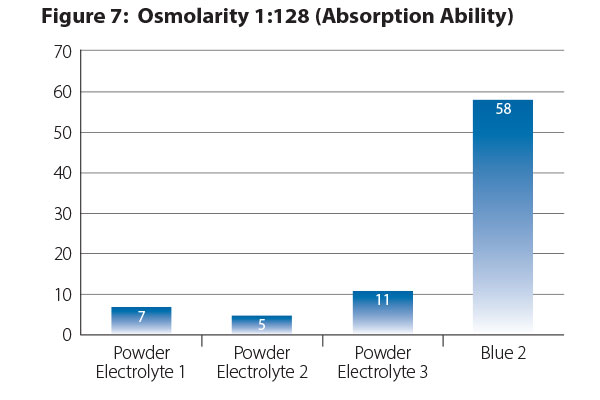
Hydration health and the benefits of nutrient dense liquids
When pigs are stressed, unfamiliar with their environment, either off feed or not on dry feed yet – they will still drink. Yet, they need energy, electrolytes, and acidification to aid gut integrity and maintain hydration health status. Specific nutrient dense liquid products provide required nutrient support in a way that optimizes both nutrient and water absorption. As a very effective attractant, these products encourage increased weaned pig water consumption and should be used at weaning, during times of stress or sickness, prior to transport to avoid shrink, or during heat (or cold) stress events.

